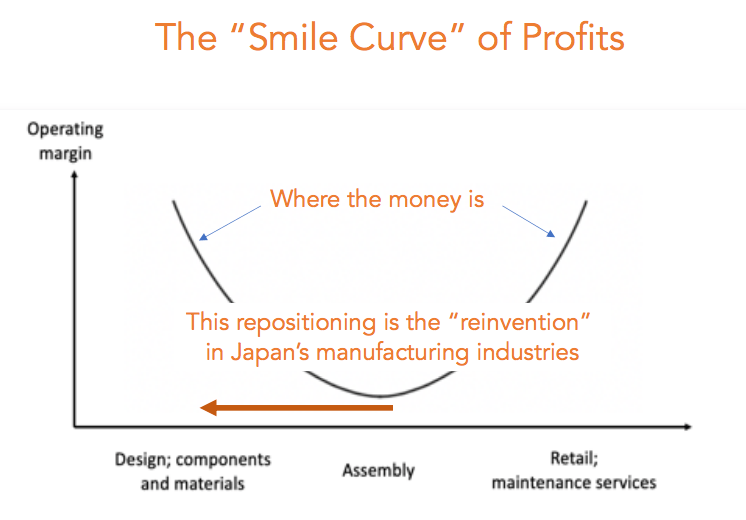On Thursday, October 22, Ulrike Schaede, Professor of Japanese Business at the University of California, San Diego, School of Global Policy and Strategy discussed Japanese corporate management and adaptation to the rising world of technology and digitalization, an exciting and relevant topic considering the economic powerhouse next door: China.
Professor Schaede began her presentation by asking a puzzling question: how is Japan the third-largest economy in the world, trailing behind the US and China, with a workforce of only 65 million people? The answer is that Japan’s best companies are slowly repositioning their business models to adapt to the rise of China and the globalization of supply chains by shifting to dominate “critical input markets.” This change, called Choose and Focus Version 2.0 or the aggregate niche strategy, is not only necessary but is also welcome in many Japanese firms (if done slowly and stably) to escape competition from China, Korea, and other East Asian competitors. It became paramount to shift strategies for many Japanese businesses when Japan lost its advantage against South Korea, Taiwan, and China in mass producing high-quality consumer end products and could no longer compete in low-end manufacturing.
This new version of business represents a shift up the “smile curve” from assembly and manufacturing to retail and maintenance services along with design and creativity. Japan now focuses on building up large firms through the aggregate niche strategy in multiple industries and has pivoted towards higher-skilled labor and a value-added approach. This progression will be significant for Japan as it models the transition of the US and Germany, two more productive and developed countries gleaning the higher profits from the upper divisions of the curve. They have even begun to see the benefits, as Japan now experiences new trade dependencies from Asian competitors and is now an anchor in Northeastern trade.
Although only 20 percent of Japanese firms, specifically “deep tech” innovation firms, have partaken in this shift thus far, this 20 percent accounts for Japan’s place as 3rd largest economy in the world. These firms are nimble, adaptive, and quick to identify new opportunities, they are smarter in deep tech industries, and they foster continuous growth and innovation. With the current exponential growth in globalization and technological development, this approach will soon be required of every country that hopes to stay economically relevant. Even in American industries such as manufacturing and production, transformation is necessary, otherwise, it will become a burden rather than an addition to the American economy. Japan’s business reinvention is a paragon for using competition to adapt, innovate, and advance.
Watch the entire event below:
To learn more about SMU Tower Center events, go here.
This post was written by Saavni Desai ’23, a President’s Scholar and Tower Scholar. She is double majoring in Political Science and International Studies with a focus on the Middle East and North Africa and triple minoring in Arabic, Philosophy, and the Tower Scholars Public Policy and International Affairs minor. She also does research alongside Professor Takeuchi and is involved in Mock Trial, Indian Student Association, and the Alpha Chi Omega sorority.

